From the balcony
It must have been the same view that held the Muthuvan gaze two centuries ago. The tree line, the undulating hills and the Western Ghats segued into the argent skies through a thick veil of mist. In the calm of early dawn Nature stood motionless narcissistically occupied by its own unrivalled beauty, posturing for a heavenly selfie. I sat on the balcony of the homestay, go-juice forgotten, with the wonderment of peering into a zoetrope. A church bell tolled somewhere in the horizon followed by a muezzin’s rending exhortation. Both with the same intent: take heart in the glory that has been laid before you.
Muthuvan. The earliest settler tribe in Munnar. Surely they had more pressing things on mind to marvel at sights for long. Fleeing from the fierce wars the ruling Pandyas were engaged in in neighbouring Tamil Nadu, they just wanted fertile land to grow food, pasture for their cattle and peace to bring up their children. The isolated high ranges of Munnar provided them with all that. Kanan Devan Hills, huge tracts of lolling tea gardens all over Munnar currently owned by the Tatas, is named after Kanan Thevar, a tribal chief and landlord. As the metallic blue of the dawn gave way to a rust-green fulgence, I espied little concrete splotches brightening up in the horizon along with daylight. Shingle roof residences to medium-size dwellings and that inevitable malady accompanying modernity – apartment blocks. The biggest of the lot – a multi-storeyed block, no less – I was told was under legal and environment scanner. Yet to be occupied, it stood with an Antilla-like ungainly distinction, a smudge on the verdant surrounds.
Are we so corrupt to allow such atrocities? So stupid to overlook their long-term ecological impact? What kind of people allows it to still stand? And the most pertinent one: how long before money and favour reaches the right place and there is a full page newspaper ad:
‘Live like a modern day Muthuvan.’
From the garden
Perfectly contoured, the estate looked like fulsome hedges. Mud paths traced their periphery – from where the plucked leaves would be collected by little tractors or rickety old Mahindra jeeps. Narrower ones scythed through their middle – here the workers treaded, sure-footed, hands in dexterous flurry. From where we stood, the garden shimmered plush green downy, wrapped around the bulbous contours of the terrain. We had driven a few kilometres ahead of Rajamalai, the national park, which was abuzz with weekend crowd. Some garden workers waiting for the bus drew our attention to a winding path that led to one of the bigger estates.
Leaving the car, we walked up the granite path reflecting pristine afternoon sun like tessellated shards of glass. Tall flights of cut stone stairs led to ‘layam’ or worker quarters removed from open gaze. Both people and animals could be heard, muted by postprandial lethargy. More workers headed down the lane, on their way to town. The younger ones looked at us with open curiosity while the elder ones with pleasant humour. Less than a couple of months ago, in December, temperatures had plunged to below 10 degrees Celsius for some days, dipping further to sub zero for three full days. While it is 15 degrees for the perfect bloom, this vagary in weather – first time in recent history – saw to the devastation of several hundred hectares of plantations in the region. A WhatsApp photograph of large swathes of estates glittering in ammil came to my mind. ‘Snowfall in Munnar’, ‘First time in recent history’ screamed ecstatic captions. I personally knew some who visited to witness ‘history’. Their testimonies inspired several others. Though mine was a last minute plan, I confess my trip too was swayed by the clamour.
From the brook
Derive: a spontaneous journey where the traveller lets the spirit of the landscape and architecture move him.
Beneath the bell-shaped bridge. It was also the only place off-piste where trespassing wasn’t prosecutable. To ensure local cooperation, we stopped at a roadside stall and had tea and snacks. But more for the local savoury ‘bonda’ soon as I espied it inside the glass case – fist-sized, fried mounds of dough, brown grenades on oil-drenched newspapers. We had to cut across the span of the arch and just before the abutment was a path. It led to a prairie land with a clear stream flowing through. Moss-covered pebbles covered the shallow bed; a feeder stream swelled the level upstream which I followed hoping to spot trout. Instead there were shiny empty sachets of shampoos and detergent, torn slippers and broken alcohol bottles. Plangent cowbells heralded a bovine intermission to our repose. One of us was wearing red and we detected – unnecessarily, as we were informed later – an uncanny interest directed towards us.
Scoot.
From the road
He held the beedi between his thumb and index finger. I waited. He shook the matchbox slightly checking for sticks. I waited. Then I waited in vain. He didn’t light up but kept staring at me blithely, not very friendly. A barmy sort, some locals supplied helpfully. I smiled at him.
“Can I take your photograph?” I asked.
He kept staring at me, unblinking.
I took out my mobile phone and pointed the camera at him.
“Can I…?”
“Just take, don’t ask.” Inputs from onlookers continued.
I put my phone down and spoke to the locals; I wanted directions to the tea museum. When I turned back at the man, he still had his beedi unlit. And he was still staring at me. I pointed my phone at him again and repeated.
“Photo?”
From a cross-legged position he straightened and leaned forward as if about to stand up. I pointed my mobile camera at him again. He was suddenly still and looked into my camera. I hesitated a bit before clicking. He looked at me quizzically, head slightly aslant, as if asking me, ‘Done?’
I nodded at him briefly with a grateful smile.
“Can I light my beedi now?” He asked.
PS: The once-in-12-years Neelakurinji blooms this July.


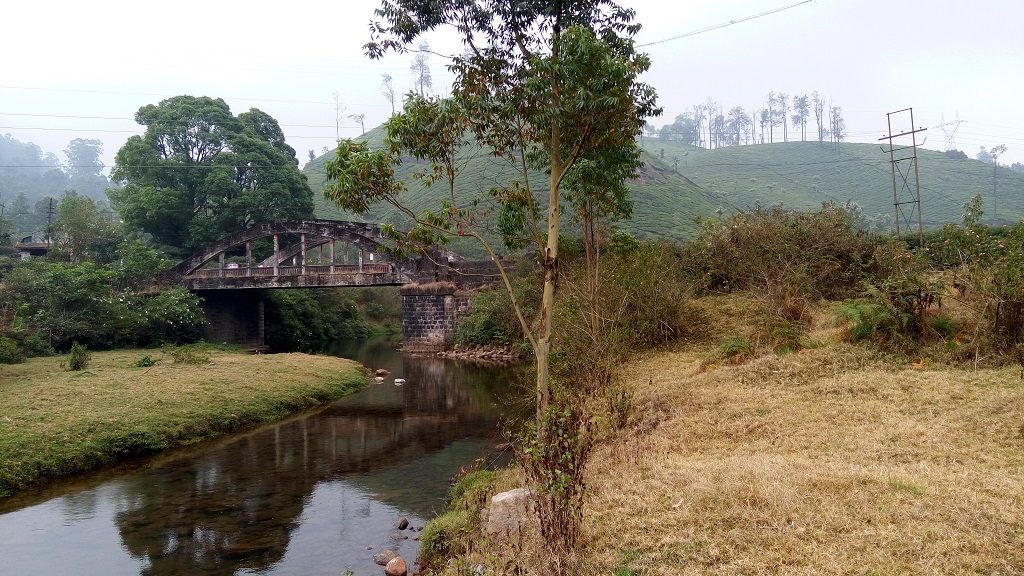
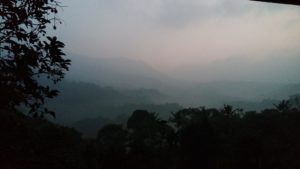
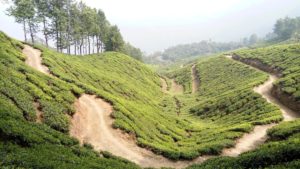
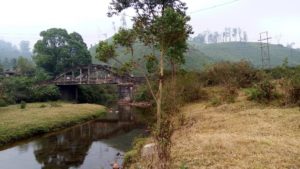
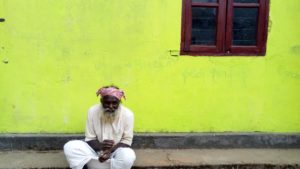









Munnar is one of my favorite place in Kerala. There are many places in munnar are best to explore but Top station is best to exploer among of them.
Just booked our flights for our first South India tour. Munnar being prominent stopover. Your blog has really manifolded my excitement to experience this heavenly place. Thanks for such a wonderful blog.
Munnar is fascinating. Since you are planning a Kerala trip, I am hoping Fort Kochi must be in the itinerary too. Do search for other Kerala stories – including houseboat experience – on my blog. Have fun!
A great article that made me think about taking a road trip from Bangalore to Munnar. Kudos! 🙂
Also, visit http://www.wheelstreet.com to rent all your favorite bikes at the most affordable prices and make the most of the upcoming long weekend.
Rent. Ride. Live!
Thank you. You should. Road trip.
Amazing blog post. thank you so much for sharing.
Wow! Wonderful Article. Thanks for sharing your experience with us.
Best regards
Monaj
Munnar is an awesome Tourism destination. very well written and explained article.